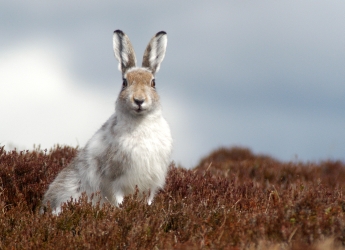
This guidance aims to provide the owners and managers of land with an understanding of how to monitor their mountain hare population using approved counting techniques.
Monitoring animal populations is important for a number of reasons. Changes in populations can tell us about responses of species to land and wildlife management, helping to set targets for conservation, sporting interest and population management.
This guidance provides ‘rules of thumb’ to help set up and carry out surveys for Mountain Hares that are expected to be suitable for a wide range of conditions or circumstances.
Two survey types are outlined in the guidance: night-time spotlighting and establishing a dung accumulation rate.
Downloads
Further information
A new volunteer survey of Mountain Hares organised by a partnership of the British Trust for Ornithology, James Hutton Institute, Game and Wildlife Conservation Trust, The Mammal Society and NatureScot has recently been launched. Information can be recorded on the Mammal Society’s MammalMapper app. The app is also capable of recording the survey route which will provide information about where Mountain Hares are absent. There are also opportunities to sign up for recording specific 1 km grid squares. The information collected will be compared against the standardised methodology described in the guidance. It is hoped that the volunteer survey will improve our knowledge of Mountain Hare populations beyond the Central Highlands (where landowners have already been monitoring hare numbers using the guidance published on this website).